so my camera has the ability for mid-roll rewind...what is this used for? i checked out the owners manual but couldn't find anything about it. does it allow me to rewind the film, put in another roll and then go back to my original if i so choose?
Navigation
Install the app
How to install the app on iOS
Follow along with the video below to see how to install our site as a web app on your home screen.

Note: This feature currently requires accessing the site using the built-in Safari browser.
More options
You are using an out of date browser. It may not display this or other websites correctly.
You should upgrade or use an alternative browser.
You should upgrade or use an alternative browser.
oh look!
- Thread starter zio
- Start date
ksmattfish
Now 100% DC - not as cool as I once was, but still
- Joined
- Aug 25, 2003
- Messages
- 7,019
- Reaction score
- 36
- Location
- Lawrence, KS
- Website
- www.henrypeach.com
- Can others edit my Photos
- Photos NOT OK to edit
The only cameras that I am aware that you can remove mid-way through the roll and then later put the film back into the camera and have it automatically go back to where you left off are some better model APS cameras. On any 35mm cameras the mid-roll rewind only allows you to rewind before you reach the end of the roll.
If you want to switch rolls in a 35mm camera, and save the film on the rest of the roll follow these steps:
1) Push the mid-roll rewind, and get your hand on the back release.
2) Listen to the steady rewind sound for the sound of the film leader pulling free, and quickly open back of camera catching the leader still outside the roll. If you miss then you will need a film leader retriever which you can buy or borrow at any camera shop.
3) Mark the frame # you were on on the roll of film or the leader.
To use the rest of the roll:
4) Load the film back into your camera.
5) Leave the lens cap on. Set the aperture to f/22. Set the shutter as high as it will go. Shut off auto-focus.
6) With the lens held close in to your body or coat (to further try to avoid any light in case your lens cap isn't 100% light tight) fire the shutter advancing the frames until you get past the shot # you wrote on the film. Go two or three frames past to avoid overlapping.
If you want to switch rolls in a 35mm camera, and save the film on the rest of the roll follow these steps:
1) Push the mid-roll rewind, and get your hand on the back release.
2) Listen to the steady rewind sound for the sound of the film leader pulling free, and quickly open back of camera catching the leader still outside the roll. If you miss then you will need a film leader retriever which you can buy or borrow at any camera shop.
3) Mark the frame # you were on on the roll of film or the leader.
To use the rest of the roll:
4) Load the film back into your camera.
5) Leave the lens cap on. Set the aperture to f/22. Set the shutter as high as it will go. Shut off auto-focus.
6) With the lens held close in to your body or coat (to further try to avoid any light in case your lens cap isn't 100% light tight) fire the shutter advancing the frames until you get past the shot # you wrote on the film. Go two or three frames past to avoid overlapping.
GerryDavid
No longer a newbie, moving up!
- Joined
- Sep 18, 2003
- Messages
- 1,221
- Reaction score
- 9
- Location
- Virginia
- Can others edit my Photos
- Photos NOT OK to edit
ksmattfish said:The only cameras that I am aware that you can remove mid-way through the roll and then later put the film back into the camera and have it automatically go back to where you left off are some better model APS cameras. On any 35mm cameras the mid-roll rewind only allows you to rewind before you reach the end of the roll.
If you want to switch rolls in a 35mm camera, and save the film on the rest of the roll follow these steps:
1) Push the mid-roll rewind, and get your hand on the back release.
2) Listen to the steady rewind sound for the sound of the film leader pulling free, and quickly open back of camera catching the leader still outside the roll. If you miss then you will need a film leader retriever which you can buy or borrow at any camera shop.
3) Mark the frame # you were on on the roll of film or the leader.
To use the rest of the roll:
4) Load the film back into your camera.
5) Leave the lens cap on. Set the aperture to f/22. Set the shutter as high as it will go. Shut off auto-focus.
6) With the lens held close in to your body or coat (to further try to avoid any light in case your lens cap isn't 100% light tight) fire the shutter advancing the frames until you get past the shot # you wrote on the film. Go two or three frames past to avoid overlapping.
This answers a question I was thinking since I read my new slr's manual. I noticed you could rewind mind roll and was wondering if it would do any harm to do what you just said, guess it wotn. :0).
Something my camera said when doing extended exposures was to attach a thing thats on the camera strap over the viewfinder, to prevent light from entering the camera through the viewfinder. Perhaps this is something you should cover while advancing to the spot on the roll that you suggested.
I wonder how much light would get in that way anywase, when I did exteded exposures with it, I just put my glove over the viewfinder to make sure. It was to cold outside to take my glove off and attach the view finder cover. :0).
ksmattfish
Now 100% DC - not as cool as I once was, but still
- Joined
- Aug 25, 2003
- Messages
- 7,019
- Reaction score
- 36
- Location
- Lawrence, KS
- Website
- www.henrypeach.com
- Can others edit my Photos
- Photos NOT OK to edit
GerryDavid said:Something my camera said when doing extended exposures was to attach a thing thats on the camera strap over the viewfinder, to prevent light from entering the camera through the viewfinder. Perhaps this is something you should cover while advancing to the spot on the roll that you suggested.
I wonder how much light would get in that way anywase, when I did exteded exposures with it, I just put my glove over the viewfinder to make sure. It was to cold outside to take my glove off and attach the view finder cover. :0).
I don't think that light can get to the film through the viewfinder during long exposures even if you don't use the viewfinder cover. But the light can enter the viewfinder and affect the meter. So it needs to be used when the camera is set on an auto exposure setting, and your eye won't be up against the viewfinder.
Those little pieces of plastic are one the first things I lost. I've done lots of long exposure day and night photography without using the viewfinder cover and never had anyproblems. The camera was always set on full manual exposure though. If you have a camera that displays f/stop and shutter in a display on the body you should be able to experiment and see it it would affect your meter reading when the camera is on auto and the viewfinder is open.
- Joined
- Sep 2, 2003
- Messages
- 34,507
- Reaction score
- 7,535
- Location
- In the mental ward of this forum
- Can others edit my Photos
- Photos NOT OK to edit
Zio, it can be a very practical feature when you've loaded your camera with one film type and find yourself in a situation where you wish you had another. I've been out with fast film then wanted slower film. I use a Pentax MZ-S so I had to quickly learn to program it where I could save my frame "place" on the roll, rewind, pop it out, reload the other roll and get my shot(s), then loaded the other roll in and watch it zoom to the correct frame. I left about 2 frames' worth for a leader because I was paranoid about overlap, but it was a needless fear - it worked great.
May not happen often, but it's a handy feature to have in such a situation. By all means, explore it!
May not happen often, but it's a handy feature to have in such a situation. By all means, explore it!
steve817
TPF Noob!
On my camera I have the option of leaving the film leader out when I rewind for such a purpose. When I re-load I leave the lens cap on and advance the frame to where ever I need it.
wwjoeld
TPF Noob!
if light does leak onto your film during a long exposure, then you have a manufacturers defect and you should get take it back. The companies just say to cover up the viewfinder to avoid problems like that.
The viewfinder exposure thing is myth of sorts.
The viewfinder exposure thing is myth of sorts.
GerryDavid
No longer a newbie, moving up!
- Joined
- Sep 18, 2003
- Messages
- 1,221
- Reaction score
- 9
- Location
- Virginia
- Can others edit my Photos
- Photos NOT OK to edit
wwjoeld said:if light does leak onto your film during a long exposure, then you have a manufacturers defect and you should get take it back. The companies just say to cover up the viewfinder to avoid problems like that.
The viewfinder exposure thing is myth of sorts.
What would cause the picture to turn yellow? :0) I think I read something about white ballance with my digital camera but I dont remember much on that one. I got my roll of film back and some night scenes I did with 30 second exposures came back yellow. And some long sunset exposures came back with a weird effect. Ill have to scan it sometime. :0).
wwjoeld
TPF Noob!
there are no white balance settings on film, that is just for digital.
ksmattfish
Now 100% DC - not as cool as I once was, but still
- Joined
- Aug 25, 2003
- Messages
- 7,019
- Reaction score
- 36
- Location
- Lawrence, KS
- Website
- www.henrypeach.com
- Can others edit my Photos
- Photos NOT OK to edit
GerryDavid said:What would cause the picture to turn yellow? :0) I think I read something about white ballance with my digital camera but I dont remember much on that one. I got my roll of film back and some night scenes I did with 30 second exposures came back yellow. And some long sunset exposures came back with a weird effect. Ill have to scan it sometime. :0).
Strange colors on long exposure shots are usually caused by a combination of things. I'd have to see the pics to say with certainty, but most film is not designed to be color accurate for exposures longer than one second. Some films do a better job than others.
Reciprocity also breaks down after 1 second (for instance, for exposures longer than a few seconds Tmax 100 is actually a faster film than Tmax400, and many other BW films).
Color casts from artificial lighting are usually exagerated in long exposures. The two most common outdoor lights cast green (mercury) and yellow (sodium). If I take a long exposure color pic of the street in front of my house it will turn out yellow.
Also, who knows what is going on in your lab? If the printing machine is being run on auto, then it's using the manufacturer's recomendations based on film type and typical consumer use. Long exposures are not typical consumer use. If the printer is actually being run by a person, then you have to take into account how they think the weird colors should look.
Bob_McBob
TPF Noob!
ksmattfish said:6) With the lens held close in to your body or coat (to further try to avoid any light in case your lens cap isn't 100% light tight) fire the shutter advancing the frames until you get past the shot # you wrote on the film. Go two or three frames past to avoid overlapping.
Remember that most cameras with infrared sprocket hole counters can advance film accurately enough that you don't even need to leave any space (though I'd imagine I might leave one for safety...). It is of course necessary to leave space with most other cameras.
Most reactions
-
 460
460 -
 289
289 -
 281
281 -
 259
259 -
 210
210 -
 196
196 -
 188
188 -
 185
185 -
 180
180 -
 172
172 -
 152
152 -
 135
135 -
 118
118 -
I
110
-
 91
91


![[No title]](/data/xfmg/thumbnail/40/40356-883c642c8d24d2709b359f9c8b196fcf.jpg?1619739437)
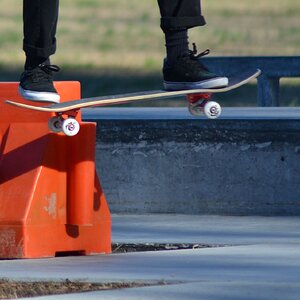

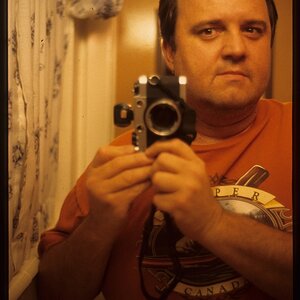
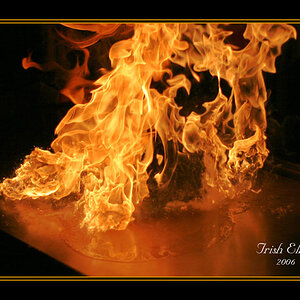
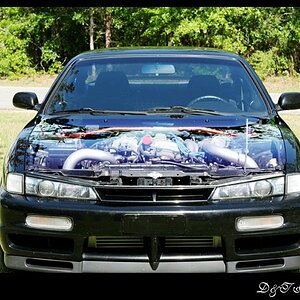
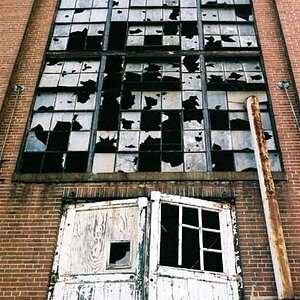
![[No title]](/data/xfmg/thumbnail/36/36396-f8e84def7352af726df923054b86284f.jpg?1619737549)
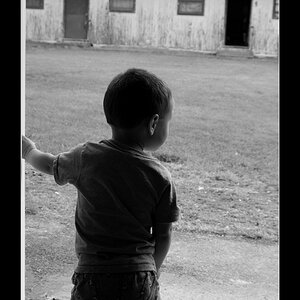
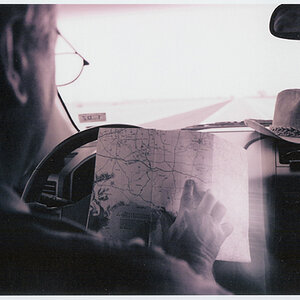
![[No title]](/data/xfmg/thumbnail/36/36395-66eaff4565ecf4245f13a9c469a9273b.jpg?1619737548)